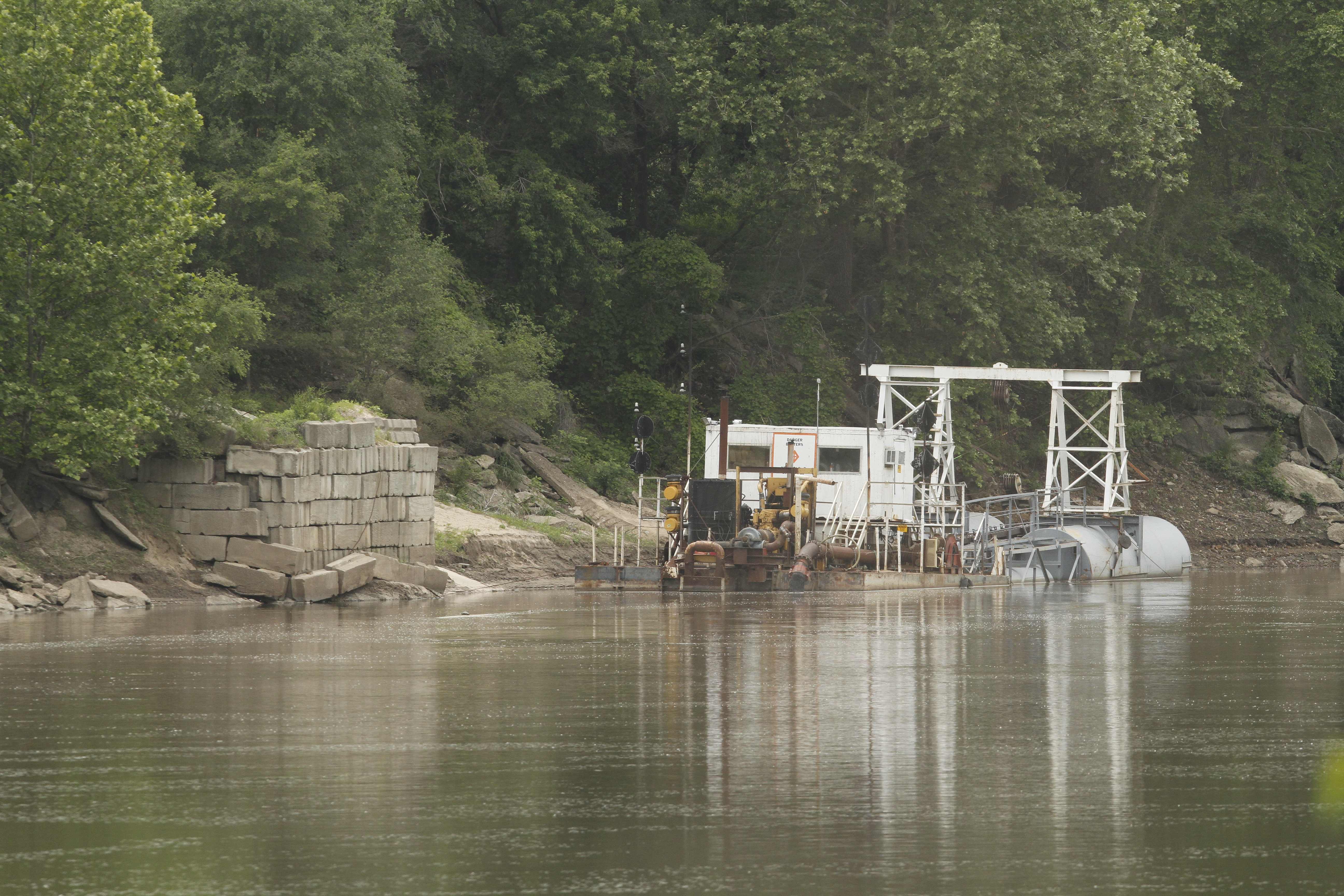Proposals to expand dredging cited as peril to Kansas River

A dredging operation sits east of downtown Lawrence along the Kansas River. Environmentalists say proposals to expand dredging of the river would degrade the river bed and bank, as well as stir up pollutants that have settled at the bottom of the river.

A dredging operation sits east of downtown Lawrence along the Kansas River. Environmentalists say proposals to expand dredging of the river would degrade the river bed and bank, as well as stir up pollutants that have settled at the bottom of the river.
A proposal to increase sand and gravel dredging along the Kansas River has placed the body of water on a list of the most endangered rivers in the country.
Each year, American Rivers, a river preservation organization, names the nation’s 10 most endangered rivers. This year’s list is led by the Potomac River, where clean water and public health are threatened by pollution, the organization said. The Missouri River also made the list because of what the organization called outdated flood management.
The Kansas River, which has been included on the list three other times in the past two decades, was No. 10.
“This is not the 10th most polluted river in the country. The river is at a crossroads. It is at tipping point,” said Laura Calwell, who is the riverkeeper with Friends of the Kaw, a local environmental advocacy group that aims to protect the river.
At the heart of the concern is a request for a U.S. Army Corps of Engineers permit that would allow five dredging companies to increase the amount of sand and gravel removed from the Kansas River by about 45 percent, from 2.2 million tons a year to 3.2 million. The permits also seek to move into three areas of the river that had been closed because of “unacceptable degradation.”
The corps is expected to make a decision late this year.
“It is going to give national recognition to this problem,” Calwell said of the American Rivers designation. “And, hopefully, influence the corps of engineers.”
The pending permits run counter to an effort through the U.S. Department of Interior to designate the Kansas River as a National Water Trials System. The federal agency also has named the Kansas River Water Trail as one of its top 101 conservation projects.
“Those two things don’t mesh,” Calwell said.
As for the health of the river, Calwell said studies show that dredging degrades the river bed and bank. And it stirs up pollutants that have settled at the bottom of the river, harming the native plants and wildlife, she said.
The five businesses that are filing for dredging permits were contacted for this story. They did not immediately return phone calls or answer the phone.
American Rivers has requested that the U.S. Army Corps of Engineers complete a new environmental impact study on dredging, deny all new permits and tonnage requests and end dredging on the river by 2017. Calwell said they don’t want to put the companies out of business but would like to see them move to mining operations in the Kansas River Valley over the next five years.
“We don’t think it is appropriate to expand dredging on the Kaw,” Calwell said.

